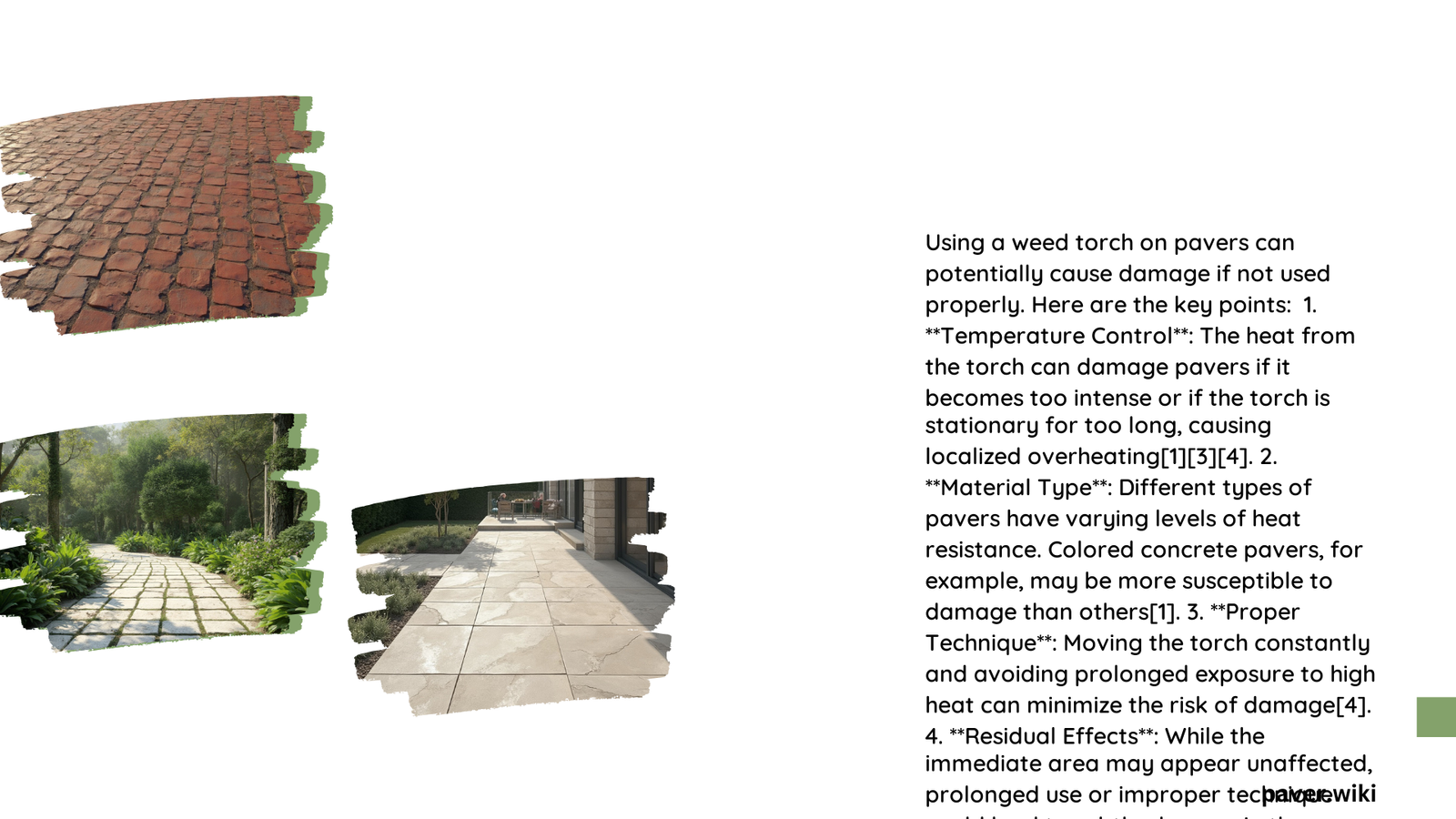A weed torch can potentially damage pavers if not used correctly. The risk of damage depends on factors such as paver material, torch temperature, exposure time, and technique. While weed torches are effective for weed control, improper use can lead to cracking, discoloration, or surface damage on pavers. This article explores the potential risks, safety precautions, and best practices for using a weed torch on pavers without causing harm.
What Are the Risks of Using a Weed Torch on Pavers?
Using a weed torch on pavers comes with several risks:
- Heat Damage: Excessive heat can cause pavers to crack, discolor, or develop surface blemishes.
- Material Sensitivity: Different paver materials have varying levels of heat resistance.
- Uneven Heating: Concentrating heat in one area can lead to localized damage.
- Fire Hazard: Improper use can potentially start fires, especially in dry conditions.
How Does Paver Material Affect Heat Susceptibility?

The type of paver material plays a crucial role in determining its susceptibility to heat damage:
- Concrete Pavers: Most vulnerable to heat damage. Can crack or discolor when exposed to high temperatures.
- Brick Pavers: More heat-resistant than concrete, but still susceptible to damage if exposed to prolonged heat.
- Natural Stone Pavers: Generally more heat-resistant, but can still suffer discoloration or cracking under extreme conditions.
| Paver Material | Heat Resistance | Potential Damage |
|---|---|---|
| Concrete | Low | Cracking, Discoloration |
| Brick | Medium | Surface Damage, Minor Cracking |
| Natural Stone | High | Slight Discoloration |
What Safety Precautions Should Be Taken When Using a Weed Torch on Pavers?
To minimize the risk of damage when using a weed torch on pavers, follow these safety precautions:
- Maintain a safe distance of 4-6 inches between the torch and pavers.
- Keep the torch moving constantly to avoid concentrating heat in one spot.
- Limit exposure time to a few seconds per area.
- Wear protective gear, including gloves, safety glasses, and long sleeves.
- Have a fire extinguisher or water source nearby.
- Avoid use during dry conditions or in fire-prone areas.
- Pre-wet the area if the soil is particularly dry.
What Are the Best Techniques for Using a Weed Torch on Pavers?
To effectively use a weed torch on pavers without causing damage:
- Quick Passes: Move the torch quickly over weeds, just enough to wilt the leaves.
- Constant Motion: Keep the torch moving in a sweeping motion to distribute heat evenly.
- Targeted Application: Focus on weed clusters rather than treating large areas indiscriminately.
- Temperature Control: Use the lowest effective temperature setting on adjustable torches.
- Timing: Apply heat during the cooler parts of the day to reduce overall temperature stress on pavers.
How Can Heat Damage to Pavers Be Identified?
Signs of heat damage on pavers include:
- Visible cracks or fissures
- Discoloration or scorching
- Surface blistering or peeling
- Uneven texture or warping
Early detection of these signs can help prevent further damage and guide future weed torch use.
What Are the Alternatives to Using a Weed Torch on Pavers?
If the risk of damage is too high, consider these alternatives:
- Manual Weeding: Physical removal of weeds using tools like weeders or hoes.
- Herbicides: Chemical weed control solutions (use with caution near pavers).
- Boiling Water: Pouring boiling water on weeds can be effective and less risky than flame.
- Vinegar Solution: A natural weed killer that’s safe for most paver types.
- Steam Weeding: Uses hot steam to kill weeds without open flame.
What Are the Cost Implications of Using a Weed Torch on Pavers?
Consider the following costs when deciding to use a weed torch:
- Equipment Cost: Basic weed torches range from $20-$50, while advanced models can exceed $100.
- Fuel Cost: Propane tanks typically cost $10-$20 for a 20-pound tank.
- Potential Repair Costs: If pavers are damaged, replacement or repair can be expensive.
Are There Legal Considerations for Using a Weed Torch on Pavers?
While specific permits are generally not required for residential use, it’s important to:
- Check local fire regulations, especially in wildfire-prone areas.
- Be aware of any homeowners’ association rules regarding landscape maintenance methods.
- Consider liability issues if damage occurs to neighboring property.
By carefully considering these factors and following best practices, you can minimize the risk of damaging pavers when using a weed torch. Always prioritize safety and be prepared to explore alternative methods if the risk of damage is too high for your specific paver type or situation.
References:
1. https://boards.straightdope.com/t/weed-torches-yes-no/817540
2. https://flameengineering.com/blogs/flame-weeding/using-a-flame-weeder-in-your-yard-and-garden
3. https://www.instructables.com/How-to-Flame-Weed-the-Beginners-Guide/
